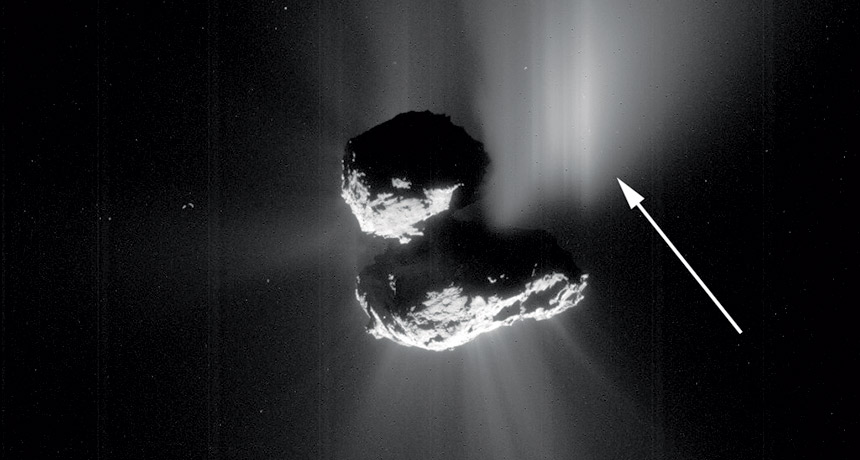Close pass by sun didn’t radically alter comet 67P’s landscape

At least one of comet 67P/Churyumov-Gerasimenko’s dusty outbursts was the result of a landslide. But such changes to the surface of the comet haven’t radically altered its appearance, suggesting it has had roughly the same look for decades — or longer.
Images from the Rosetta spacecraft taken before its demise show what happened to the comet as it passed close to the sun in 2015. Cliffs collapsed, ripplelike features about 100 meters across appeared and disappeared, dust eroded and boulders moved about — probably as a result of changes in exposure to sunlight, researchers report online March 21 in Science.
Another team of researchers also studied images of the comet’s surface, specifically what a cliff called Aswan looked like before and after dust shot out from the comet on July 10, 2015. After the outburst, the edge of the cliff was sharper, and many more boulders had appeared in the area, linking the collapse of the cliff to the dusty outburst, the researchers report March 21 in Nature Astronomy. The cliff collapse ejected half a million to a million kilograms of material into space, the scientists estimate.
But such surface changes don’t alter the overall structure of the comet. It still retains its rubber duck–like look (SN: 10/31/15, p. 17). Comet 67P probably acquired this shape and its major surface features during previous passes by the sun, perhaps as far back as 1840 or possibly even earlier, the authors of the Science paper say.
Some of these results are also scheduled to be presented at the Lunar and Planetary Science Conference in The Woodlands, Texas, on March 21.



